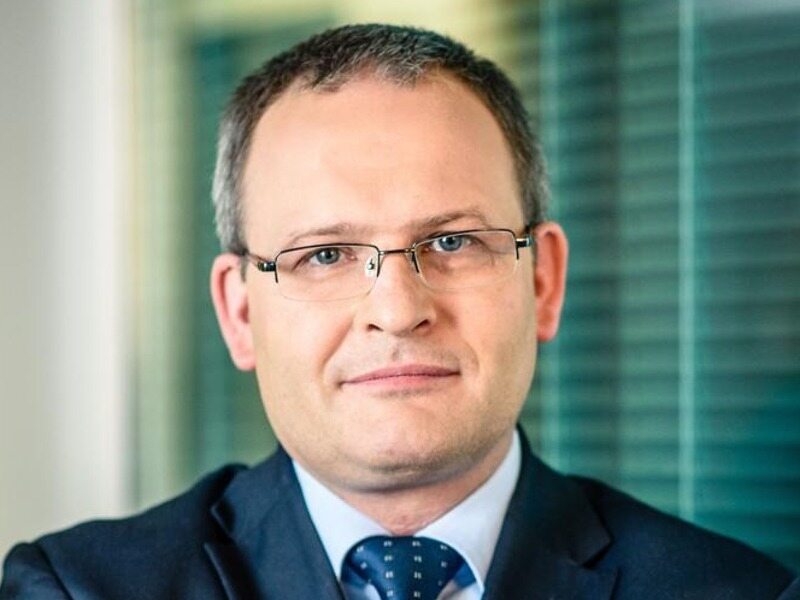Deputy Minister Miłkowski: Changes in drug reimbursement from April 1 are a revolution

Reducing the prices of Polish medicines in pharmacies, new therapies for cervical cancer, ovarian cancer, new regimens for patients with leukemia, changes in the treatment of SMA and myasthenia gravis, revolutionary changes in the hypercholesterolemia treatment program: Deputy Minister of Health Maciej Miłkowski talks about the new products that will be available from April 1 .
Katarzyna Pinkosz, Wprost: Mr. Minister, a few days ago, together with Minister Izabela Leszczyna, you presented another reimbursement list – a revolutionary one: very broad, covering many new therapies. Also new is the first list of so-called drugs. Polish medicines.
Deputy Minister of Health Maciej Miłkowski: This is a very broad and thematically extensive list; I'm glad we managed to accomplish some new things. The first one is related to the list of Polish medicines and the payment for them to patients. This is an important change; we show that we treat medicines produced in Poland differently. We also show companies the direction that each “download” of drug production to Poland will be covered by preference.
Polish drug producers will have preferences; this includes no need to negotiate or extend the period for issuing reimbursement decisions. The second type of preference is that with the granting of the “Polish medicine” status, patients will have to pay less in pharmacies.
Will patients feel the change in their own pockets? Will Polish medicines have a reduced price in the pharmacy?
Yes, it will be a 10% price reduction. (in the case of a drug produced in Poland) or 15%. (in the case of a medicine produced in Poland from an active substance produced in Poland). Of course, this applies to reimbursed drugs.
There are also big changes on the list itself: new medicinal substances and changes in drug programs have appeared. A number of drugs will also be able to be used off-label, i.e. outside the indications…
We analyzed the entire project in terms of which drugs we could expand to off-label use. This applies – from the pharmacy list – to, among others: mycophenolate mofetil (in myasthenia gravis), tacrolimus (including in nephrotic syndrome and some other kidney diseases). As part of drug programs, we have allowed the off-label use of rituximab (including in primary immune thrombocytopenia, myasthenia gravis), oxaliplatin (in esophageal malignancy), kepecitabine (in a number of cancers), and efgartigimod alfa (in myasthenia gravis). In the case of myasthenia gravis, there is one more drug in the reimbursement process, and two more will enter the process, so the situation of patients may change significantly this year. If we are talking about off-label treatment, it is also possible to prevent RSV infections for a larger group of children. So far, it covered only premature babies and children with hemodynamically significant congenital heart defects, now the indications are extended to children with SMA (up to 2 years of age) and cystic fibrosis (up to 1 year of age)
Why these two groups?
There is very good scientific evidence for the effectiveness of such prevention; AOTMiT assessed them positively. In patients with cystic fibrosis or SMA, RSV infection contributes to a significant deterioration of lung function; it may also cause health deterioration. Speaking of SMA, it must also be said that the program has been tidied up and, among other things, the possibility of using gene therapy in special cases has expanded.
There are changes in drug programs: oncological and non-oncological…
A new drug has appeared in cervical cancer (pembrolizumab), as well as olaparib in the second line of recurrent ovarian cancer – for patients without BRCA1,2 mutations who could not be treated with it before. Another big change is the new drug for melanoma (a combination of nivolumab and relatlimab in one molecule). We also have expected changes in hemato-oncology: in chronic lymphocytic leukemia (ibrutinib with venetoclax in the first line, regardless of the presence of high-risk mutations; acalabrutinib in the second line). The drug program has been changed.
For pediatric patients after stem cell transplantation, there is an opportunity to use the drug to prevent cytomegalovirus reactivation. The drug was reimbursed for adults. It will now be possible to use the treatment also in children – the change was adopted at the request of the scientific community.
As for non-oncological indications, an expected change in the treatment of MS is the possibility of using subcutaneous natalizumab. In the treatment of ulcerative colitis and Crohn's disease, we have expanded the eligibility options for the drug program and a new drug has appeared (upadacitinib for Crohn's disease). We have also expanded the treatment options in the field of rheumatology (the same drug for patients with active spondyloarthropathy).
Will cardiologists also be happy with the changes on the list?
There have been a number of changes on the pharmacy list: a drug combining ezetimibe with atorvastatin will be reimbursed: this is the first combined drug from a Polish manufacturer. We have expanded the indications for ezetimibe because so far it could be reimbursed in limited indications. We have also changed the B.101 program – treatment of lipid disorders and familial hypercholesterolemia. The first change is the possibility of using evolocumab in patients with homozygous familial hypercholesterolemia and in pediatric patients with homozygous and heterozygous familial hypercholesterolemia. The second important and expected change is the liberalization of the inclusion criteria in the program: these include patients with a very high cardiovascular risk (LDL concentration from 100 to 70 mg/dl, which will greatly expand the group of patients treated and reduce the risk of serious cardiovascular events).
An important change on the pharmacy list is the extension of indications for empagliflozin (heart failure, renal failure) and the return to the list of canagliflozin (diabetes). A drug has appeared for women in severe cases of uterine fibroids – it is a big social problem. We have a new program for patients with inflammation of the nose and paranasal sinuses with the first drug (dupilimumab), and the second one is also in the process. There is also a new drug for patients with severe asthma (tezepelumab) – for some of the population, another, fifth, molecule, but for the population of patients with low eosinophilia <150 without signs of allergy - the first biological therapy. Our pharmacy list includes an innovative drug for adults with schizophrenia (brexpiprazole).
There is also good news for ASMD patients.
For patients with ASMD (acid sphingomyelinase deficiency), enzyme replacement therapy has been made available under the Medical Fund, for now for 2 years, later we will assess the clinical effectiveness of the treatment. A drug used to treat hyperkalemia in adults (patiromer) also appeared on the pharmacy list; is a drug that is on the first list of TLKs, i.e. drug technologies of high clinical value.
How do you assess the possibilities of using innovative medicines today?
We are at European level, and in many respects we exceed the EU average. Of course, there may be some shortcomings; It happens that some groups of patients tell us that, for example, in the Czech Republic, Lithuania or Romania there are some reimbursed drugs, but not yet in Poland. However, there is no country where all medicines are reimbursed. Currently, even in Germany or the Nordic countries, it is more difficult to obtain reimbursement for new therapies. In Poland, we reimburse many innovative therapies. In hemato-oncology we have basically everything, except really super expensive therapies; CAR-T are used, perhaps not yet in all indications. Of course, medicine is developing, so there will certainly be challenges.
Questions often arise about rare diseases – is a different approach to reimbursement needed?
It is known that research in rare diseases is conducted differently – we take into account that these are not randomized trials. We look at each case individually. Negotiations are difficult, but I am happy when a compromise is reached.
What do you see as priorities for the future, for the coming quarters?
There will be extensions of CAR-T therapy, new applications, negotiations. There will definitely be an application to extend treatment for cystic fibrosis patients – we will try to process it as quickly as possible. We are working on drugs with proven effectiveness in oncology and cardiology, which no longer have exclusivity periods and generics are available; AOTMiT will analyze our conclusions. Perhaps in the second half of the year we will introduce the first new drugs, reimbursed at the request of the Ministry of Health with the consent of the manufacturers.
We will be expanding the list of drugs on the pharmacy list. Thanks to changes in the reimbursement lists, the list of free medicines for children under 18 years of age and the list of 65 plus patients, patients pay less and less for medicines, but still a lot. Medications that are not reimbursed are especially problematic. We have many that would be worth including reimbursement: this is the direction we want to go. This is currently the greatest need of patients. Medicines prescribed by a doctor – because their use is necessary, according to medical knowledge – should be reimbursed.
Deputy Minister Maciej Miłkowski– deputy minister of health. He was, among others, deputy director for economic affairs of the Institute of Cardiology in Warsaw, deputy president of the National Health Fund for finance.
Since 2018, he has been Undersecretary of State at the Ministry of Health.






